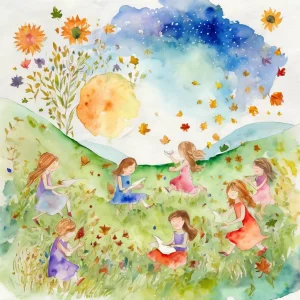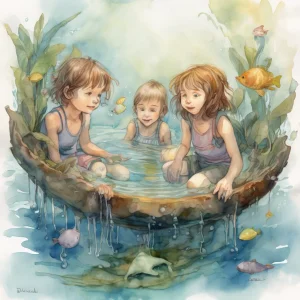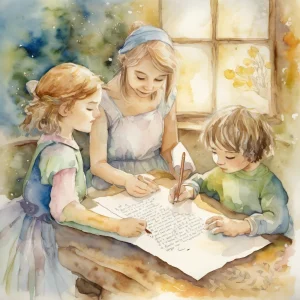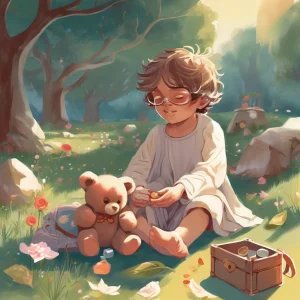Activity
Similar Activities
Whispers of the Seasons: Seasonal Collage Exploration
Children’s Age: 5–6 years
Activity Duration: 10 minutes
Engaging activity where children create collages representing different seasons.
Activity Duration: 10 minutes
Nature's Objects: Exploring Buoyancy Adventure
Children’s Age: 6–7 years
Activity Duration: 10 minutes
An engaging hands-on activity for children aged 6-7 to explore buoyancy with natural objects.
Activity Duration: 10 minutes
Gratitude Journey: Writing Thank-You Notes Experiment
Children’s Age: 6–8 years
Activity Duration: 10 – 20 minutes
A creative activity for children aged 7-8 to write thank-you notes, enhancing cognitive and communication skills.
Activity Duration: 10 – 20 minutes
Enchanted Discovery: Nature Scavenger Hunt with a Twist
Children’s Age: 7–8 years
Activity Duration: 10 minutes
An outdoor educational activity for children aged 7-8 involving a nature scavenger hunt with historical items, leading to a nature collage creation.
Activity Duration: 10 minutes
Sensory Treasure Hunt: A Magical Exploration Journey
Children’s Age: 0 month – 6 years
Activity Duration: 10 minutes
Let's go on a Sensory Treasure Hunt! We will use our senses to explore different items like textures, scents, and sounds. You can feel, smell, and listen to each item while blindfo…
Activity Duration: 10 minutes
Sensory Texture Hunt for Developing Skills
Children’s Age: 4–7 years
Activity Duration: 5 – 10 minutes
Let's go on a Sensory Treasure Hunt! We will explore different textures like smooth stones, soft feathers, and rough sandpaper. You can use blindfolds for an extra challenge if you…
Activity Duration: 5 – 10 minutes
Nature Scavenger Hunt to Boost Language Skills
Children’s Age: 0 month – 18 years
Activity Duration: 10 minutes
Let's go on a Nature Scavenger Hunt to find cool things outside! Grab a bag, a list of items like acorns and leaves, and maybe a magnifying glass. Find a safe spot, make the list, …
Activity Duration: 10 minutes
Little Desk Heroes: Turning Everyday Desk Items into Storytelling Characters
Children’s Age: 4–10 years
Activity Duration: 10 minutes
Let's have fun with storytelling using stationery characters! Gather paper, pens, pencils, markers, and stationery items like paper clips and sticky notes. Kids can create characte…
Activity Duration: 10 minutes
Enchanted Sensory Garden Exploration for Infants
Children’s Age: 0 – 3 months
Activity Duration: 10 minutes
Explore the Sensory Garden with your little one aged 0 to 3 months for a delightful outdoor sensory experience. Enhance communication skills and adaptive development as your infant…
Activity Duration: 10 minutes
World Wonders: Around the World Dance Party
Children’s Age: 2–3 years
Activity Duration: 15 minutes
Introduce children aged 24 to 36 months to different cultures with the "Around the World Dance Party" activity. Set up a dancing space with world music and optional props like scar…
Activity Duration: 15 minutes
Enchanted Melodies: Musical Rhyme Relay Adventure
Children’s Age: 3–4 years
Activity Duration: 15 – 20 minutes
Engage children aged 36 to 48 months in the Musical Rhyme Relay, a fun activity promoting adaptive development and communication skills. Set up a relay course with cones, musical i…
Activity Duration: 15 – 20 minutes
Earth's Natural Wonders: Creative Storytelling Journey
Children’s Age: 10–12 years
Activity Duration: 20 – 45 minutes
This activity is designed for children aged 10-12 to improve self-regulation and communication skills through creative storytelling about Earth's natural processes. With paper, cra…
Activity Duration: 20 – 45 minutes


























